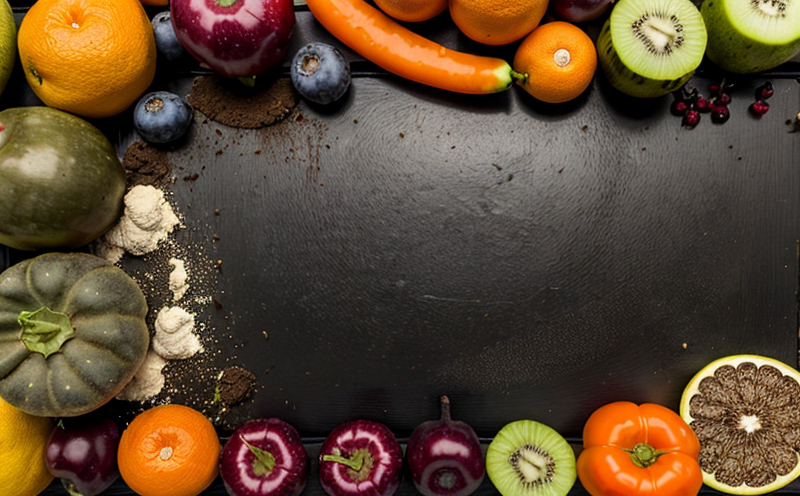AOAC 2015.10 Multi-Residue Mycotoxin Analysis in Fruits and Vegetables
The AOAC Official Method 2015.10 is a widely recognized standard for the multi-residue analysis of mycotoxins in fruits and vegetables. This method ensures accurate and reliable detection, quantification, and identification of mycotoxins that can pose significant health risks to consumers.
Mycotoxin contamination of foodstuffs like fruits and vegetables is a global concern due to the potential for adverse effects on human health. These toxins are produced by certain molds (fungi) under specific environmental conditions, leading to contamination during growth, harvest, or storage. The presence of mycotoxins in food products can lead to various health issues including acute toxicity, carcinogenicity, and immunosuppression.
AOAC 2015.10 utilizes a liquid chromatography-tandem mass spectrometry (LC-MS/MS) approach for the simultaneous determination of multiple mycotoxins in complex matrices such as fruits and vegetables. This method allows for high sensitivity, selectivity, and precision necessary to detect trace levels of these harmful compounds.
The procedure involves several steps including sample preparation, extraction, clean-up, and analysis. Sample preparation typically includes homogenization followed by the addition of a suitable solvent for extraction. The extract is then passed through a solid-phase extraction cartridge to remove interfering matrix components before injection into the LC-MS/MS system.
The instrumentation used in this method includes an Agilent 1290 Infinity II HPLC coupled with a mass spectrometer (Agilent 6460B). The chromatographic separation is optimized for efficient resolution of various mycotoxins present within the sample. Following the separation, ions are detected and quantified using tandem mass spectrometry which provides structural information about each compound.
The method is validated according to international standards (ISO, ASTM, EN, IEC) ensuring its accuracy and reproducibility across different laboratories worldwide. Validation parameters include linearity over a specified range, recovery rates, precision (repeatability), and detection limits for all target mycotoxins.
Our laboratory adheres strictly to this standard procedure throughout the entire analytical process from sample receipt through final report generation ensuring compliance with regulatory requirements. Regulatory bodies such as FDA, EU Commission Directives, WHO recommend routine testing of foods like fruits and vegetables using AOAC 2015.10 for mycotoxin detection.
By utilizing this method, we can provide clients with comprehensive data regarding the presence and concentration levels of mycotoxins in their products thereby facilitating informed decision-making processes related to quality assurance and safety measures.
Why Choose This Test
- Comprehensive detection of multiple mycotoxins simultaneously.
- Highly sensitive, selective, and precise analytical technique.
- Adherence to international standards ensuring accuracy and reproducibility.
- Routine testing recommended by regulatory authorities worldwide.
- Supports informed decision-making processes related to quality assurance and safety measures.
- Promotes compliance with relevant regulations governing food safety.
Quality and Reliability Assurance
We understand the importance of accurate, reliable results in maintaining trust among consumers and regulatory bodies alike. To ensure this, our team follows strict protocols throughout every stage of testing from sample receipt through final report generation. Our quality management system is ISO/IEC 17025 accredited which guarantees adherence to recognized standards for competence and impartiality.
Our laboratory personnel are trained extensively in the use of advanced analytical equipment including LC-MS/MS systems. They undergo regular training updates to stay abreast with latest developments within the field. Additionally, our facilities maintain stringent quality control measures ensuring consistent performance across all analyses performed here.
We also participate in proficiency testing programs organized by recognized organizations such as AALAC International or other bodies associated specifically with food safety analysis. These exercises help us identify any potential issues early on and implement corrective actions promptly if necessary. Participation further reinforces our commitment towards continuous improvement of services offered."





